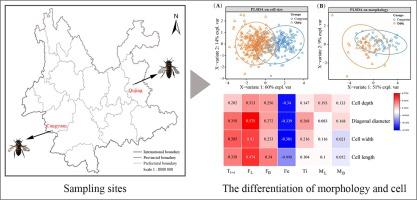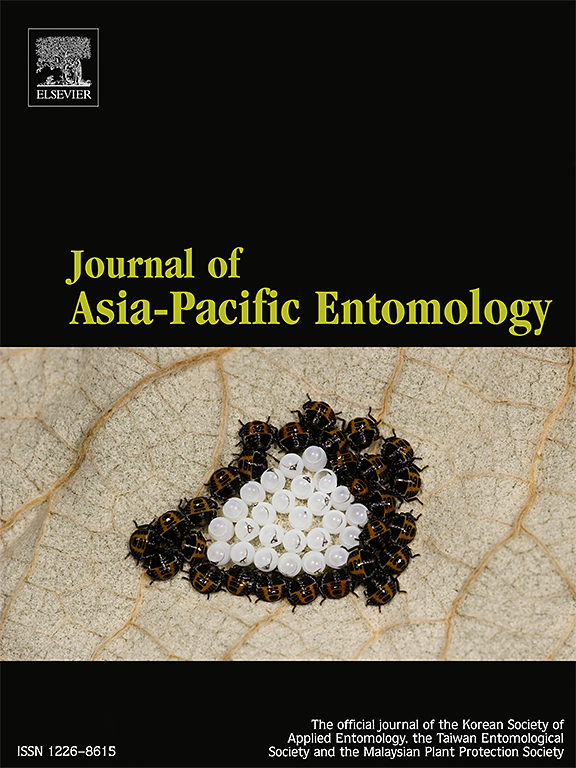High variation of worker cell and morphology between two adjacent populations of honey bee, Apis cerana (Hymenoptera, Apidae)
Abstract
Honey bee population inhabiting among different geographic regions often exhibit distinctive traits and phenotypes as a means of enhancing their adaptation to local environmental conditions. Morphological difference of worker was used to reflect the honey bee population locality adaptation and as one of the important markers of species evolution. Here, four comb cell and seven morphology characters of honey bee Apis cerana from two adjacent populations of Yunnan Province were measured to explore the effect of local adaptation on worker comb cell and morphology. Results showed that the characters of worker comb cell and morphology was significant difference between samples from these two local populations of A. cerana. It was separated into two groups which corresponding into the general A. cerana geographic population of Yungui Plateau and South Yunnan base on worker comb cell and morphology character. The worker comb cell size and morphology of A. cerana from Qujing were found to be significantly larger than those from Cangyuan. The indices that showed the most significantly different between populations were cell depth and right forewing length. Moreover, a strong positive correlation was observed between the cell diagonal diameter and the right forewing length, with a correlation coefficient 0.575. In conclusion, honey bee A. cerana population appear high variation in comb cell and morphology to adapt the locality environment. The forewing length of worker was the most significant variation indices between geographic populations, and could be as an indicator of worker cell and morphology among different A. cerana geographic populations.



 求助内容:
求助内容: 应助结果提醒方式:
应助结果提醒方式:


